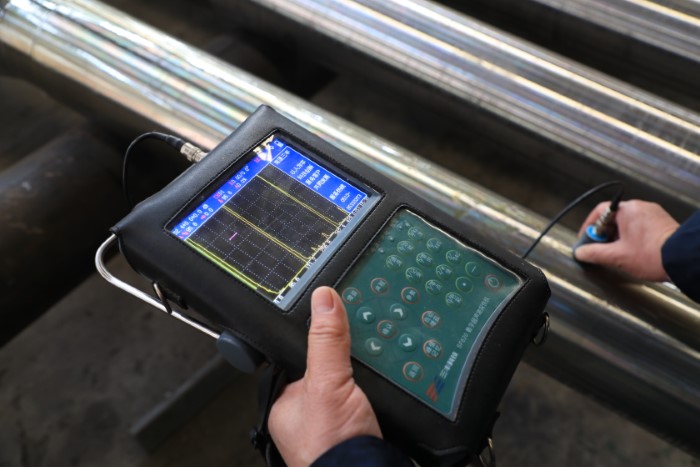Ultrasonic Testing (UT): Using the principles of ultrasonic propagation and reflection in materials to detect defects. Advantages: It can detect internal defects in forgings, such as pores, inclusions, cracks, etc; Having high detection sensitivity and positioning accuracy; The entire forging can be quickly inspected.
Magnetic Particle Testing (MT): By applying a magnetic field to the surface of a forging and applying magnetic powder under the magnetic field, when defects exist, the magnetic particle will form a magnetic charge accumulation at the defect location, thus visualizing the defect. Advantages: Suitable for surface and near surface defect detection, such as cracks, fatigue damage, etc; Magnetic fields can be applied to forgings to detect defects by observing the adsorption of magnetic particles.
Liquid Penetrant Testing (PT): Apply penetrant to the surface of the forging, wait for the penetrant to penetrate the defect, then clean the surface and apply imaging agent to reveal the location and morphology of the defect. Advantages: Suitable for defect detection on the surface of forgings, such as cracks, scratches, etc; It can detect very small defects and detect non-metallic materials.
Radiographic Testing (RT): The use of X-rays or gamma rays to penetrate forgings and detect internal defects by receiving and recording the rays. Advantages: It can comprehensively inspect the entire large forging, including internal and surface defects; Suitable for various materials and forgings with larger thicknesses.
Eddy Current Testing (ECT): Using the principle of electromagnetic induction, eddy current defects in the tested forging are detected through the alternating magnetic field generated by the induction coil. Advantages: Suitable for conductive materials, capable of detecting defects such as cracks, corrosion, etc. on the surface and near the surface of forgings; It also has good adaptability for complex shaped forgings.
These methods each have their own characteristics, and suitable methods can be selected based on specific situations or combined with multiple methods for comprehensive detection. Meanwhile, non-destructive testing of large forgings usually requires experienced and skilled personnel to operate and interpret the results
Post time: Nov-07-2023





